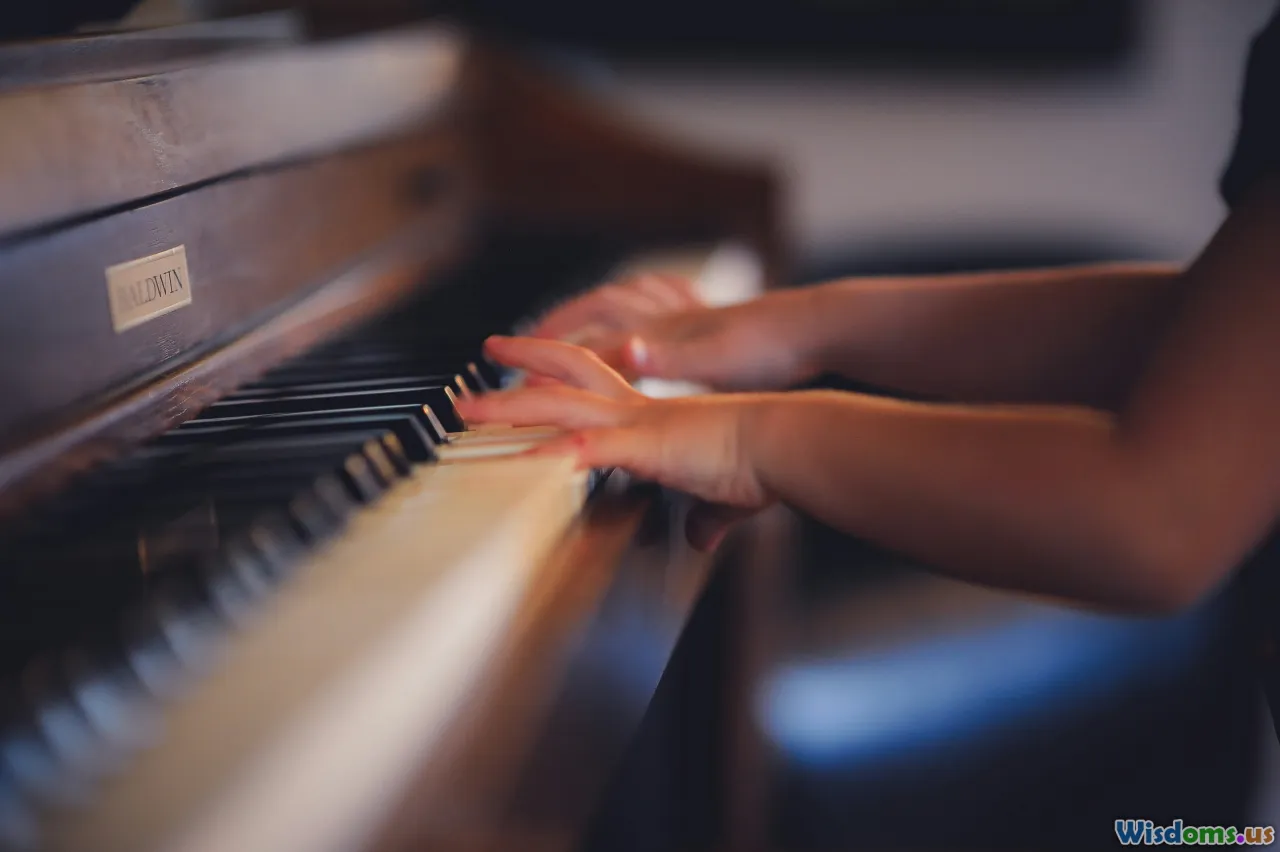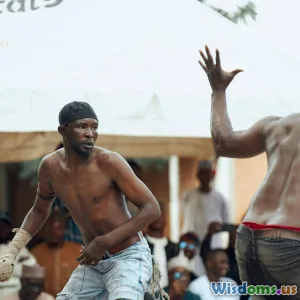
The Secret Evolution of Major International Jazz Festivals
9 min read Explore the hidden transformation of global jazz festivals and their impact on music culture worldwide. (0 Reviews)
The Secret Evolution of Major International Jazz Festivals
Jazz music, often described as the soundtrack of cultural fusion, innovation, and rebellion, has found its most visible expression not only in recordings and clubs but in its vibrant festival culture. Major international jazz festivals have morphed dramatically since their mid-20th century origins, evolving beyond simple concert events to become dynamic cultural phenomena that significantly influence global music trends and communities.
In this article, we unravel the secret evolution behind major international jazz festivals, examining how these events have developed in scope, audience, and artistic diversity, while spotlighting their roles in society, innovation, and economic impact.
Origins: From Local Jamborees to Global Gatherings
Jazz festivals began primarily as localized celebrations of jazz music. Take the Newport Jazz Festival, founded in 1954 in Rhode Island by George Wein. It is largely considered the first true jazz festival and set a template for future events.
Newport was revolutionary—it was one of the first outdoor, multi-day dedicated jazz festivals featuring stars like Duke Ellington, Ella Fitzgerald, and Miles Davis. Its success proved the public hunger for large-scale jazz experiences beyond club scenes. This event also highlighted logistical and political challenges, from crowd control to social tensions during an era of segregation in America.
Following Newport’s trail, festivals sprouted worldwide. The Montreux Jazz Festival started in 1967 in Switzerland amid the burgeoning European appreciation for American jazz. Unlike Newport, Montreux gradually broadened its scope to include blues, soul, and eventually pop and rock artists, reflecting the expansion and fusion within jazz.
These pioneering festivals established early themes of evolution itself—a blend of tradition and innovation driving audience expectations and event programming.
Expansion and Diversification: Embracing Music’s Eclectic Nature
As jazz music evolved, especially in the 1970s and beyond, so did jazz festivals. Major events worldwide began embracing sub-genres, fusions, and eclectic sounds, attracting broader audiences.
Artistic Innovation and Genre Blending
For instance, the Monterey Jazz Festival in California, established in 1958, adapted to changes by showcasing not only classic jazz legends but also experiments influenced by rock, funk, and world music. Artists like Herbie Hancock and Weather Report pushed boundaries on these stages, signaling that jazz festivals were platforms for genre innovation, not preservation alone.
In the same vein, the Tokyo Jazz Festival introduced and celebrated Afro-jazz and Latin jazz to Asian audiences, fostering cross-cultural musical dialogues. These festivals became places where global sounds intersected, thriving on versatility and inclusion.
Technology and Media Influence
The late 20th century ushered in technological advancements that drastically altered promotion and broadcast of jazz festivals. Live broadcasts, TV specials, and eventual internet streaming exploded reach and influence. The Montreal Jazz Festival, now the world’s largest jazz festival, uses online platforms and social media to engage millions globally—far beyond physical attendees in any year.
This exponential exposure expanded artists’ careers and democratized festival access. People from remote regions could experience live sets from festival stages thousands of miles away.
Socioeconomic and Cultural Impacts
Economic Drivers
Jazz festivals are economic powerhouses for host cities. The Montreux Festival attracts about 250,000 music lovers annually, fueling tourism, hospitality, and local businesses.
A 2018 study of the Cape Town International Jazz Festival revealed its remarkable economic impact, generating over $50 million annually for South Africa’s economy and creating thousands of jobs. Festivals drive urban regeneration, foster infrastructure development, and elevate international city profiles.
Cultural Diplomacy and Social Inclusion
Jazz festivals often serve as platforms for cultural diplomacy and social programs. The Umbria Jazz Festival in Italy has championed initiatives promoting peace, diversity, and arts education.
Similarly, the North Sea Jazz Festival in the Netherlands has intentionally incorporated musicians from countries with restricted artistic freedom, fostering cross-border cultural exchange and solidarity.
Moreover, these festivals are springboards for recognizing marginalized voices within jazz. The Women in Jazz Festival schools and workshops run in conjunction with many major festivals spotlight gender equality and nurture underrepresented artists.
Challenges and Adaptations in the Modern Era
Maintaining Relevance Amid Changing Tastes
In today’s fragmented music industry, maintaining vibrancy is challenging. Jazz festivals strive to balance respect for jazz heritage with embracing contemporary sounds.
Increasingly, festivals feature hip-hop, electronic jazz fusion, and neo-soul, reflecting younger audiences’ tastes and sustaining interest in jazz’s spirit of innovation. For example, the London Jazz Festival integrates contemporary styles alongside traditional acts, marking a synthesis between eras.
Environmental and Social Sustainability
Modern festivals face pressure to adopt sustainable and socially responsible models. The Montreux Jazz Festival has committed to reducing its carbon footprint, incorporating waste reduction and green transportation initiatives.
Considering COVID-19’s impact, festivals also innovated with virtual stages and hybrid attendance models, supporting artists financially and maintaining cultural continuity during lockdowns.
Spotlight on Iconic Jazz Festivals and Their Unique Contributions
Newport Jazz Festival
Its pioneering spirit and legendary performances—like Miles Davis’s 1958 set, considered one of jazz’s landmark moments—cement Newport’s historic status.
Montreux Jazz Festival
Known for legendary live recordings such as Nina Simone’s "Live at Montreux 1976" and its genre-defying inclusiveness.
North Sea Jazz Festival
A trendsetter in lineup diversity and scale, hosting over 1,200 concerts and hundreds of artists annually.
Cape Town International Jazz Festival
Afro-jazz’s premier stage, showcasing African jazz legends alongside international stars, promoting cultural exchange.
Conclusion: The Continuing Journey of Jazz Festivals
The secret evolution of major international jazz festivals reveals a remarkable story of adaptability, cultural exchange, and innovation. From modest beginnings to multifaceted global events, these festivals embody jazz’s essence—they are improvisations in community, music, and society.
Future jazz festivals will undoubtedly continue incorporating emerging technologies, deeper inclusivity, and sustainable practices, ensuring jazz remains a living, evolving art form worldwide.
For music lovers, artists, and cultural observers alike, understanding this evolution enriches appreciation and invites participation in an ongoing global musical dialogue.
References & Further Reading
- Gourse, Leslie. Madame Jazz: Contemporary Women Instrumentalists. Oxford University Press.
- Hennessey, Mike. Jazz London:The City, The Music. Northway Publications.
- Montreux Jazz Festival Official Site - https://www.montreuxjazzfestival.com
- Cape Town International Jazz Festival Economic Impact Study, 2018
- North Sea Jazz Festival History & Archives
"Jazz festivals are living, breathing entities—they transform along with the music itself, mirroring changes in culture and society with every note played." — Jazz historian Karen Loren
About the Author
[Optional author bio here]
Rate the Post
User Reviews
Popular Posts
















